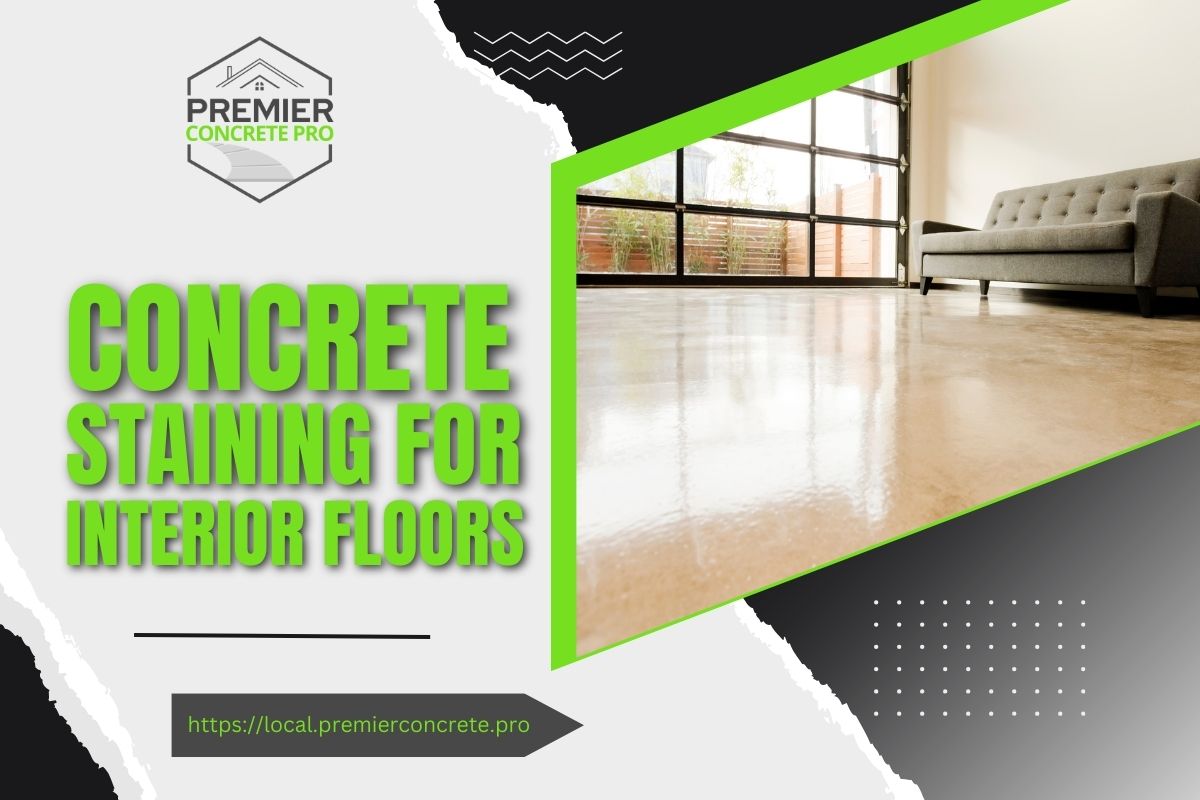Concrete Staining for Interior Floors: A Timeless and Elegant Choice
Concrete staining has evolved as a popular indoor flooring option that flawlessly combines durability, versatility, and aesthetic appeal. Concrete flooring is no longer regarded as boring and lifeless. Concrete floors may transform any space into an elegant, sophisticated, and inviting environment thanks to developments in staining techniques and a wide range of colors and designs. In this post, we will look at the art of concrete staining for interior flooring, highlighting its benefits, application technique, and the limitless design options it provides.
Unveiling the Beauty of Concrete Staining
Concrete staining is a one-of-a-kind way to enhance the natural beauty of concrete floors by adding depth, dimension, and brilliant hues. Unlike standard floor coverings such as carpets, tiles, or hardwood, concrete staining is an in-situ procedure that includes changing an existing concrete slab into a gorgeous masterpiece. Stains become a permanent part of the floor by penetrating and chemically interacting with the concrete surface.
Unparalleled Versatility
The incredible versatility of concrete staining is one of the most persuasive reasons to adopt it. This technology allows homeowners and interior designers to experiment with various colors, patterns, and textures. It allows them to unleash their creativity to create custom-made floors that fit any style or theme.
Concrete staining may adapt to your vision, whether you like a modern, minimalist design, a rustic mood, or an attractive and sophisticated setting. The color palette is nearly infinite, ranging from warm earthy tones to chilly blues and grays. Furthermore, staining can be used with scoring, stenciling, or engraving to produce elaborate motifs and borders that seem like expensive stones like marble or slate but cost a fraction.
The Advantages of Concrete Stained Floors
Concrete stained floors provide several benefits, making them popular for interior areas. The first thing that sticks out about them is their durability. Concrete is naturally robust and tough, and when stained properly, it becomes even more resistant to stains, scratches, and abrasion. As a result, it’s ideal for high-traffic areas like kitchens, living rooms, and corridors.
Another significant advantage of concrete stained floors is the minimum upkeep required. Unlike many other flooring options requiring frequent upkeep and maintenance, concrete-stained floors are reasonably simple to clean and maintain. A simple mop and occasional resealing are generally enough to keep them looking like new.
Concrete staining and its durability and low maintenance provide a cost-effective choice for homeowners and property owners. Compared to more expensive natural stone or hardwood flooring, concrete staining offers a more inexpensive option without sacrificing beauty. It is ideal for people seeking a luxurious look on a budget without sacrificing style and elegance.
Aside from the practical advantages, selecting concrete staining can be a conscientious decision for environmentally conscious people. Concrete is an eco-friendly flooring option because it is a sustainable material that does not deplete natural resources. Furthermore, staining eliminates the need for additional materials that could lead to waste, lowering the overall environmental effect.
The Concrete Staining Process
Concrete staining demands precision, ability, and attention to detail to achieve the desired results. Hiring a competent contractor with concrete staining skills is critical for creating a beautiful finish. The following are the general steps involved in the process:
Surface Preparation: The concrete surface must be properly cleaned and free of any sealers, paints, or pollutants before staining. This stage also addresses any fractures or defects to guarantee a smooth and uniform staining application.
Application of Stain: The staining procedure begins after the surface has been prepped. Stains that are acid-based or water-based can be utilized, each with a distinct impact. Acid-based stains react chemically with the minerals in concrete to produce a varied and organic appearance. On the other hand, water-based stains provide a wider range of color options and are quicker to apply, making them suited for various design concepts.
Sealing and Protection: A sealer is used after the stain has dried and entered the concrete to protect the surface and enhance the colors. Sealers can also be glossy or matte, depending on the intended effect. This final process protects the damaged floor from stains and scratches and improves the overall appearance, giving it a glossy and refined aspect.
Design Ideas for Concrete Stained Floors
Concrete stained floors offer an exciting opportunity to modify your home with a wide range of design ideas:
Natural Elegance: Warm browns and terracotta tones can produce a pleasant and natural environment, ideal for living rooms and bedrooms. Incorporating organic patterns and textures strengthens the link to nature, allowing you to bring the beauty of nature within.
Modern Chic: Choose cool grays, sleek blacks, or industrial-inspired metallic tones for a modern and sophisticated atmosphere. Pair with geometric patterns or minimalistic designs for a modern, stylish aesthetic. Concrete stained flooring in such designs can provide a sophisticated and artistic touch to your décor.
Vintage Charm: Soft pastel colors and aged effects can recreate old European cottages’ vintage and rustic appeal. This style is ideal for kitchens and dining rooms because it produces a comfortable and nostalgic ambiance that improves the joy of meeting and dining.
Bold Statements: Use colorful colors to make a statement in home offices, children’s playrooms, and entertainment areas. Create eye-catching patterns or color combinations to highlight your style and create an environment representing your distinct taste and personality.

